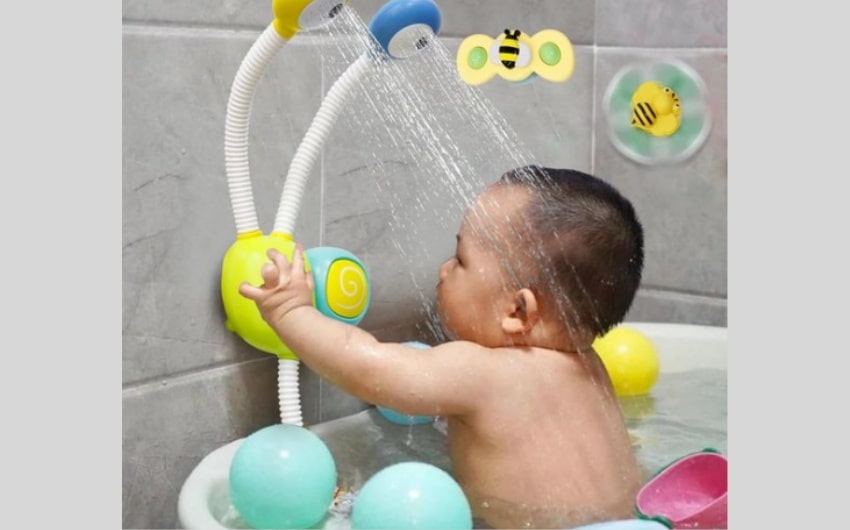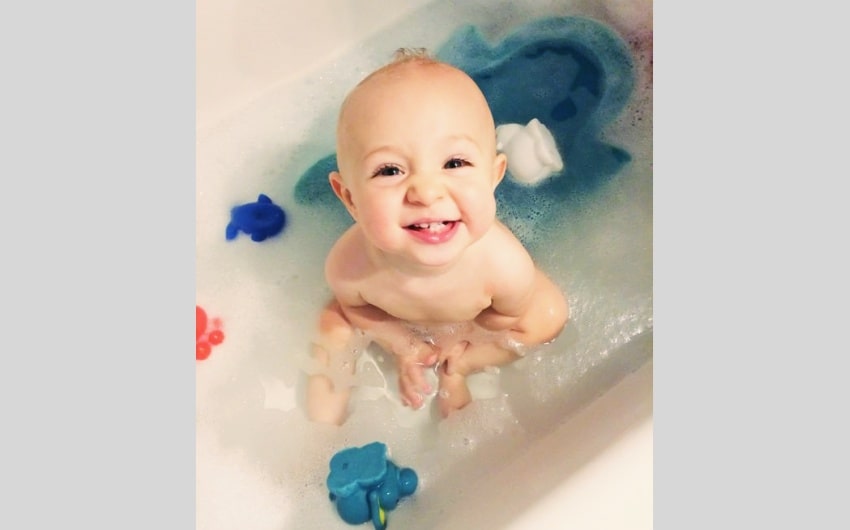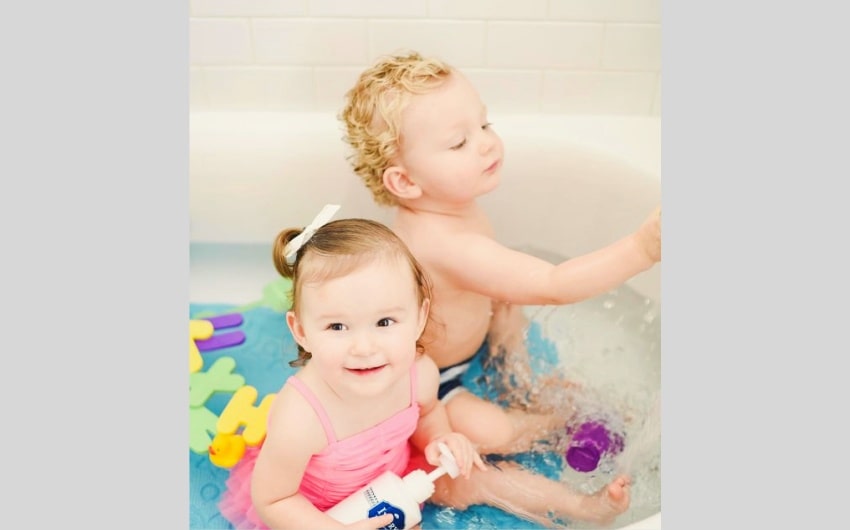In the realm of parenting, one question frequently surfaces: “How often should you bathe your baby?” This simple inquiry holds significance, reflecting the delicate balance between maintaining hygiene and preserving a baby’s sensitive skin. With a plethora of advice available, it can be challenging for new parents to find the right answer.
This article aims to demystify the bathing frequency for babies, offering expert guidelines and practical tips to ensure your little one’s health and happiness.
Understanding a Baby’s Skin

A baby’s skin is distinctly different from that of an adult. It’s much thinner, more delicate, and highly sensitive. This sensitivity is due to the developing nature of a baby’s skin, which hasn’t yet fully acquired the robustness to defend against harsh external elements.
Additionally, a baby’s skin is less oily, which means it has a weaker natural barrier and is more prone to dryness and irritation. Understanding these characteristics is crucial when considering how often to bathe a baby, as frequent bathing can strip away the limited protective oils and lead to skin problems.
The approach to bathing a baby should be informed by these skin properties, ensuring that their delicate skin is cared for gently and effectively.
Recommended Bathing Frequency

Image source: Pinterest
The appropriate frequency for bathing a baby varies with different stages of their early life. Here’s a guideline based on their developmental stages:
1. Newborns (0-4 weeks)
For newborns, especially in the first month, bathing two to three times a week is usually adequate. Their limited activity means they don’t get excessively dirty. During this stage, it’s important to focus on gentle sponge baths until the umbilical cord stump falls off and heals.
2. Infants (1-12 months)
As babies grow beyond the newborn stage, they start to become more active. For infants, bathing frequency can increase slightly. Bathing them every other day or three times a week is typically sufficient. This frequency helps maintain cleanliness, especially as they begin to explore their environment more.
3. Older Infants and Toddlers (1-3 years)
Once a baby reaches the toddler stage, daily bathing might become necessary. Their increased activity levels, including playing outdoors, eating solid foods, and perhaps even starting potty training, can lead to more mess. However, even at this stage, it’s crucial to assess your child’s skin condition and environmental factors to decide the optimal frequency.
It’s important to note that these recommendations can vary based on individual factors such as climate, the baby’s skin type, and any existing skin conditions. Parents should observe how their baby’s skin reacts to bathing and adjust the routine accordingly.
The key is to ensure that the baby remains clean and comfortable without over-bathing, which can strip their skin of essential oils and lead to dryness.
6 Factors Influencing Bathing Frequency

Image source: Pinterest
Several factors can influence how often a baby should be bathed, and understanding these can help tailor a bathing routine that best suits the child’s needs:
1. Age and Developmental Stage
As mentioned earlier, newborns require fewer baths compared to older infants and toddlers. The increased activity and mobility as babies grow often necessitate more frequent baths.
2. Skin Conditions
Babies with certain skin conditions, such as eczema or cradle cap, might need a modified bathing schedule. For some, daily baths with specific products can help manage symptoms, while for others, less frequent bathing may be advisable to prevent skin dryness.
3. Climate and Environment
The climate you live in can significantly impact your baby’s bathing needs. In hot and humid conditions, babies may sweat more, requiring more frequent baths. Conversely, in colder climates, where skin tends to dry out more easily, less frequent bathing might be preferable.
4. Baby’s Health and Activity Level
An active baby who crawls or walks, plays outside, or tends to get messy with food may need more regular baths. Additionally, if a baby is sick and experiences symptoms like vomiting or diarrhea, more frequent cleaning might be necessary for hygiene and comfort.
5. Personal Preference and Cultural Practices
Parental preferences and cultural norms also play a role in determining how often a baby is bathed. Some cultures prefer daily baths as part of their routine, while others opt for less frequent bathing.
6. Water Quality
The type of water available for bathing (hard or soft) and its chemical treatment (like chlorination) can affect a baby’s skin. In some cases, it might be advisable to reduce the frequency of baths to prevent skin issues caused by the water quality.
It’s essential for parents to consider these factors and observe their baby’s response to bathing. If a baby’s skin seems dry or irritated after baths, it might be a sign to reduce the frequency.
Conversely, if the baby seems to enjoy baths and their skin remains healthy, the current routine can be maintained. When in doubt, consulting a pediatrician can provide personalized advice based on the baby’s specific needs and circumstances.
Bathing Techniques and Tips

Image source: Pinterest
Effective and safe bathing of your baby not only involves understanding how often to bathe them but also using the right techniques and tips to ensure a pleasant experience. Here are some key guidelines:
1. Preparation Is Key
Before you start the bath, make sure you have everything you need within reach – baby soap, shampoo, washcloths, a towel, a clean diaper, and a change of clothes. This preparation helps in keeping the baby safe, as you should never leave them unattended during bath time.
2. Ideal Water Temperature
The water should be warm, not hot. Aim for about 100°F (38°C), which feels comfortable to the touch. You can use a bath thermometer or test the water with your elbow or the inside of your wrist, which are more sensitive to heat than your hands.
3. Gentle Bathing Products
Use mild, baby-specific products that are designed for their sensitive skin. These products should be free from harsh chemicals and fragrances that can irritate a baby’s skin.
4. Technique for Washing
Start by gently washing your baby’s face with plain water, without soap. Then, using a soft washcloth and a small amount of baby soap, gently wash the rest of their body. Remember to pay special attention to the diaper area, as well as any skin folds where dirt can accumulate.
5. Shampooing
If your baby has hair, you can gently shampoo it. A tear-free baby shampoo is ideal. Just use a small amount, massage it gently onto the scalp, and then rinse thoroughly.
6. Rinsing and Drying
Make sure to rinse off all soap from your baby’s body. After the bath, wrap them in a soft, warm towel and pat them dry instead of rubbing, which can irritate their skin. Ensure to dry the skin folds completely to prevent irritation.
7. Bath Time Safety
Never leave your baby unattended in the bath, even for a moment. Always keep one hand on your baby when they are in the water. Also, make sure the bathing area is safe – no sharp edges and a non-slip surface.
8. Making Bath Time Enjoyable
Engage with your baby during bath time with gentle talking and singing. This can make bath time a soothing and bonding experience for both of you.
9. Post-Bath Skincare
After drying, you might apply a gentle, hypoallergenic baby lotion to keep their skin moisturized, especially if they have dry skin. However, this is not always necessary for every baby.
Remember, each baby is different, and what works for one may not work for another. It’s important to be patient and flexible, adapting your approach based on your baby’s reactions and comfort level. Bath time should be a calm, bonding experience that is enjoyable for both parent and baby.
Common Challenges and Solutions

Image source: Pinterest
1. Fussy or Fearful Baby
Some babies may cry or seem afraid during bath time. To help, create a calm environment with warm water, gentle talking, or even soft singing. Bath toys can also distract and entertain them. Consistency in bath time routine can help your baby feel more secure.
2. Skin Irritation or Dryness
If your baby’s skin appears dry or irritated after bathing, try using milder soap or bathing them less frequently. After bath, applying a fragrance-free, hypoallergenic moisturizer can help. For persistent skin issues, consult with your pediatrician.
3. Safety Concerns
Never leave a baby unattended in the bath, even for a second. Always keep one hand on your baby, use a non-slip mat, and check water temperature before bathing. Keep all bath supplies within arm’s reach to avoid having to step away.
4. Water in Ears or Eyes
To prevent water from getting into your baby’s ears, avoid submerging their head and gently wash their hair and head. Use a soft cloth to clean their face and a tear-free shampoo to avoid eye irritation.
By understanding these common challenges and implementing these solutions, bath time can become a more enjoyable and stress-free experience for both you and your baby.
Alternative Cleaning Methods

Image source: Pinterest
- Sponge Baths: Ideal for newborns or when a full bath isn’t possible. Use a damp, warm sponge or washcloth to gently wipe down your baby, paying special attention to the diaper area, skin folds, face, and hands.
- Wipe-Downs: For in-between baths, a quick wipe-down with a damp cloth can help maintain hygiene. This is especially useful for cleaning up after meals or outdoor activities.
- No-Rinse Cleansers: There are baby-specific, no-rinse cleansers available that can be used to clean your baby without a full bath. These are gentle and can be a quick alternative for cleaning up small messes.
Each of these methods can be effective for keeping your baby clean and comfortable, especially when a traditional bath is not necessary or practical.
Conclusion
Figuring out how often to bathe your baby is a common concern for many parents. By understanding your baby’s skin, considering various influencing factors, and applying the right techniques, you can ensure a pleasant and healthy bath time experience. Above all, be attentive to your baby’s individual needs and adapt as they grow and change.


